Ifrane: Morocco’s Little Switzerland in the Atlas Mountains
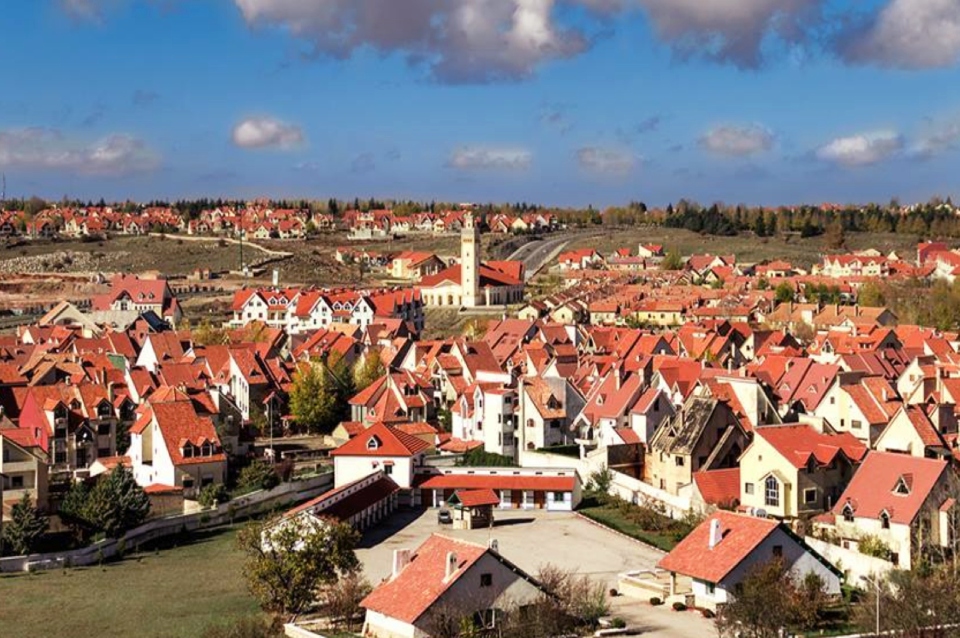
Perched at 1,665 meters in the Middle Atlas Mountains, Ifrane stands as one of Morocco’s most unexpected destinations. Known affectionately as “Little Switzerland” for its Alpine-style architecture, pristine cleanliness, and cool climate, this mountain town offers a striking contrast to the Morocco of desert sands and bustling medinas. With its European ambiance, cedar forests, winter skiing, and year-round fresh mountain air, Ifrane presents travelers with a unique Moroccan experience that defies stereotypes and delights visitors seeking natural beauty and tranquility.
A Town Unlike Any Other in Morocco
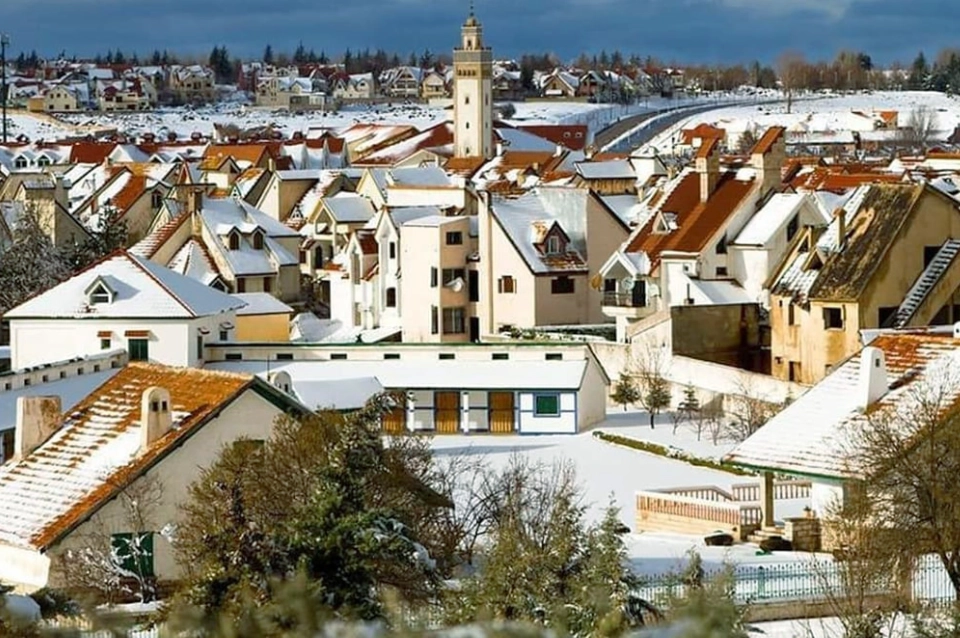
Ifrane’s story is relatively recent in Moroccan terms. The town was established in 1929 during the French protectorate as a summer retreat for colonial administrators seeking escape from the lowland heat. The French architects designed Ifrane with Alpine aesthetics—steep-roofed chalets, manicured gardens, and wide tree-lined boulevards that could have been transplanted from Switzerland or Bavaria.
Today, Ifrane maintains this distinctive character while serving as home to Al Akhawayn University, one of North Africa’s most prestigious institutions. The university’s international student body adds cosmopolitan flair to the town, while its English-language instruction makes Ifrane unusually accessible to anglophone visitors.
The town’s extraordinary cleanliness immediately strikes visitors. Streets are immaculate, public spaces are meticulously maintained, and environmental consciousness permeates local culture. In 2013, Ifrane was named Africa’s cleanest city, a designation locals take seriously. This orderliness, combined with cool temperatures and Alpine architecture, creates an atmosphere more reminiscent of European mountain resorts than typical Moroccan cities.
The Iconic Stone Lion

No visit to Ifrane is complete without photographing the town’s most famous landmark—a stone lion statue carved by a German prisoner of war in 1942. This sculpture has become Ifrane’s symbol, featured in countless photographs and serving as the de facto meeting point in town. The lion sits proudly in a small garden near the town center, watching over streets and visitors with stone dignity.
The statue’s backstory adds historical intrigue. During World War II, Axis prisoners were held in the region, and one talented German sculptor was commissioned to create this monument. The result has outlasted its wartime origins to become a beloved local icon. Visitors queue for photos with the lion, particularly during peak seasons when the surrounding gardens bloom with flowers or snow dusts the sculpture’s stone mane.
Natural Wonders and Outdoor Activities
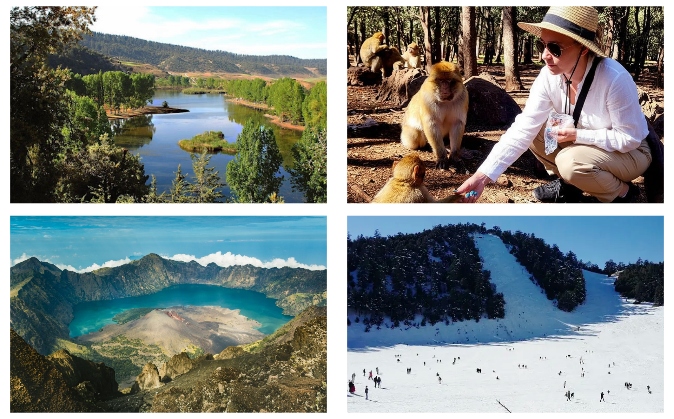
Ifrane National Park
Surrounding the town, Ifrane National Park encompasses over 500 square kilometers of pristine Middle Atlas wilderness. This protected area contains North Africa’s largest cedar forest, home to the endangered Barbary macaque—North Africa’s only primate and Europe’s only wild monkey population (found at Gibraltar).
The park’s landscape varies from dense cedar forests to alpine meadows, limestone formations, and mountain streams. Hiking trails wind through this diverse terrain, ranging from easy nature walks to challenging mountain treks. The most popular trails lead to viewpoints overlooking dramatic valleys, through ancient cedar groves, and alongside streams where wildlife comes to drink.
Birdwatchers find the park rewarding, with species including Levaillant’s woodpecker, Atlas flycatcher, Moussier’s redstart, and various raptors. Spring and autumn migrations bring additional species. The park’s elevation and habitat diversity support remarkable biodiversity for such a geographically contained area.
Cedar Forests and Barbary Macaques
A short drive from Ifrane leads to magnificent cedar forests where massive trees tower overhead, some hundreds of years old. These Atlas cedars grow to impressive sizes, their thick trunks and spreading branches creating cathedral-like forest atmospheres. Walking among these ancient giants provides perspective on nature’s timescales and power.
The cedar forests harbor populations of Barbary macaques, which visitors can observe in their natural habitat. These tailless monkeys live in troops, foraging for food, grooming each other, and raising young in the forest. While they’ve become habituated to human presence, they remain wild animals deserving respect and distance. Local guides help visitors observe macaque behavior while minimizing disturbance to the animals.
Conservation efforts aim to protect both the cedar forests and macaque populations, both facing threats from habitat loss and human activities. Visiting responsibly—maintaining distance, avoiding feeding, and staying on trails—helps ensure these natural treasures endure.
Dayet Aoua Lake
This scenic lake sits just outside Ifrane, offering recreational opportunities and natural beauty. During summer, the lake attracts picnickers, walkers, and families enjoying the mountain setting. A path circles the lake, providing easy walking with views across water to surrounding hills. Birdlife concentrates around the lake, particularly during migration seasons.
Winter transforms Dayet Aoua when freezing temperatures turn the lake into ice. While the frozen lake creates beautiful scenery, be cautious about ice thickness before venturing onto its surface. Local authorities typically advise against walking on the ice except when officially declared safe.
Skiing at Michlifen
Just 17 kilometers from Ifrane, the Michlifen ski resort offers Morocco’s best skiing and snowboarding. This small but charming resort operates from January through March, depending on snowfall. While modest compared to European or North American ski destinations, Michlifen provides unique experiences—skiing in Africa with views extending to distant Atlas peaks.
The resort features several runs suitable for beginners and intermediate skiers, though advanced skiers may find limited challenges. Equipment rental, ski schools, and basic facilities support winter sports enthusiasts. The resort’s modest scale creates friendly, uncrowded atmospheres where learning and casual skiing thrive.
Even non-skiers enjoy visiting Michlifen during winter for the snow experience, mountain views, and cozy lodge atmosphere. The resort’s restaurant serves hot meals and drinks perfect for warming up between runs or simply enjoying snowy mountain vistas.
Four Seasons in Ifrane

Ifrane’s elevation creates distinct seasons, each offering different experiences:
Spring (March-May)
Spring brings wildflowers blooming across meadows and gardens. Temperatures warm gradually, snow melts from lower elevations, and wildlife becomes more active. This season offers excellent hiking as trails become accessible and landscapes green with new growth. Spring is ideal for photography, birdwatching, and experiencing nature’s renewal in the mountains.
Summer (June-September)
Summer in Ifrane means escape from lowland heat. While coastal cities swelter at 35-40°C, Ifrane enjoys comfortable 20-25°C temperatures. This attracts Moroccan tourists seeking cool mountain air, making summer the busiest season. Long daylight hours allow extended outdoor activities, and evening temperatures drop enough for sweaters and outdoor fires. Gardens reach peak bloom, creating colorful displays throughout town.
Autumn (October-November)
Autumn transforms forests with changing leaf colors. The cedar groves and deciduous trees turn gold, orange, and red, creating spectacular fall foliage. Temperatures cool but remain pleasant for hiking and outdoor exploration. Autumn offers fewer crowds than summer while maintaining good weather, making it ideal for photography and nature appreciation.
Winter (December-February)
Winter brings snow to Ifrane and surrounding mountains. The town transforms into a snowy Alpine village, with white blankets covering roofs, gardens, and streets. This is skiing season at Michlifen, and winter sports enthusiasts flock to the mountains. Even without skiing, winter offers unique experiences—snowball fights in parks, cozy cafés with fireplaces, and stunning snow-covered landscapes. Temperatures often drop below freezing at night, with daytime highs around 5-10°C.
Al Akhawayn University

Al Akhawayn University deserves mention as a defining feature of modern Ifrane. Established in 1995 by royal decree, this public university operates on an American higher education model with English as the language of instruction. The campus architecture blends Moroccan and international styles, creating an attractive setting within extensive grounds.
The university brings international atmosphere to Ifrane. Students from Morocco and abroad create diverse communities, while visiting professors and researchers add academic energy. The campus includes a library, sports facilities, theaters, and galleries occasionally open for public events.
While not a tourist attraction per se, Al Akhawayn’s presence influences Ifrane’s character—creating demand for cafés, restaurants, and services that cater to international tastes, improving English-language accessibility, and adding youthful vibrancy to this mountain town.
Architecture and Urban Planning
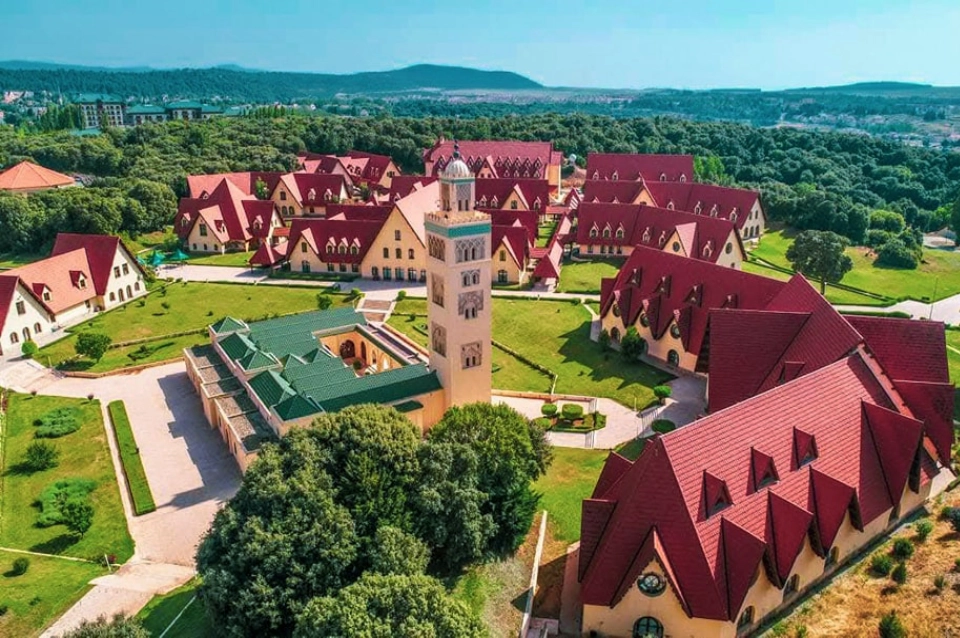
Ifrane’s architecture remains its most distinctive feature. Alpine-style chalets with steep roofs designed to shed snow, stone and wood construction, colorful window shutters, and ornamental details characterize the built environment. Public buildings maintain this aesthetic even when serving modern functions.
The town planning emphasizes green spaces. Parks, gardens, and tree-lined streets create pleasant pedestrian environments. Roundabouts feature flower beds and sculptures. The overall effect is orderly, attractive, and unusually spacious for a Moroccan town, reflecting the planned nature of Ifrane’s creation.
Recent development has sometimes challenged architectural coherence, with modern buildings departing from traditional Alpine styles. However, regulations generally maintain aesthetic consistency, and Ifrane retains its distinctive character even as it grows.
Cultural Experiences

Despite its European appearance, Ifrane remains distinctly Moroccan. Local cafés serve mint tea and Moroccan pastries alongside international coffee drinks. Restaurants offer tagines and couscous along with pizza and pasta. The weekly market brings traditional commerce to town, with vendors selling produce, spices, and goods to local families.
The surrounding region includes Berber villages where traditional ways continue. Day trips or hikes to these villages provide authentic cultural encounters. Local guides can arrange visits where guests experience Berber hospitality, sample home-cooked meals, and learn about traditional crafts and agriculture.
Islamic festivals and national holidays are observed with local customs. During Ramadan, the rhythm of daily life shifts, with restaurants closing during daylight hours and special evening atmospheres emerging after iftar. Eid celebrations bring festive energy, with families gathering and markets offering special goods.
Day Trips from Ifrane
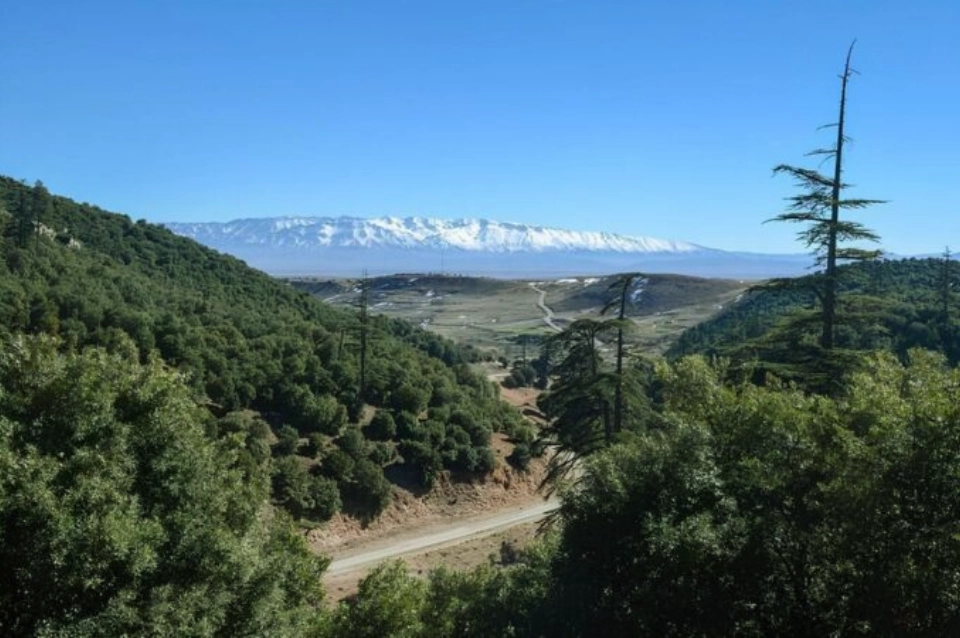
Azrou
This Berber town lies 17 kilometers from Ifrane and makes an easy half-day excursion. Azrou’s Tuesday market is one of the region’s largest, attracting villagers from surrounding mountains who come to trade goods. The market offers handicrafts, particularly carpets and wood carvings made from local cedar. Azrou’s center retains traditional character with narrow streets and local shops.
Near Azrou, the Cedar Forest called “La Forêt des Cèdres” contains some of the Middle Atlas’s most impressive trees and highest concentrations of Barbary macaques. This makes Azrou the best base for wildlife watching and forest exploration.
Mischlifen Rock Formations
Beyond the ski resort, unusual rock formations create striking geological landscapes. Erosion has carved limestone into dramatic shapes, and caves dot the hillsides. Hiking among these formations provides adventure and spectacular photography opportunities. Local guides know the best routes and can explain the geological processes that created these features.
Ain Leuh
This village offers authentic Berber cultural experiences in a stunning mountain setting. Traditional architecture, local markets, and surrounding natural beauty make Ain Leuh worth visiting. The village’s name means “spring of the lioness,” referencing the natural spring that supplies fresh water. From Ain Leuh, hiking trails lead deeper into the Atlas Mountains.
Fez and Meknes
Ifrane’s location makes it convenient for day trips to Morocco’s imperial cities. Fez lies about 60 kilometers north (approximately one-hour drive), while Meknes sits slightly closer. These cities offer contrasts to Ifrane’s mountain atmosphere—ancient medinas, historic monuments, bustling souks, and centuries of Islamic architecture. Many visitors base themselves in Ifrane while making day trips to these cultural treasures, enjoying mountain tranquility while exploring historical sites.
Where to Stay in Ifrane
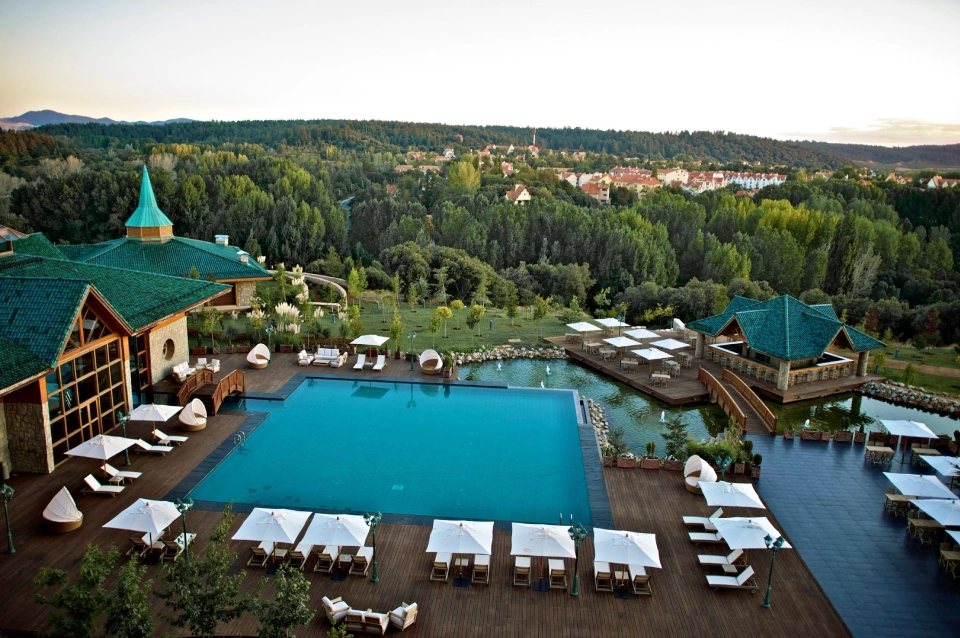
Luxury Hotels
Several upscale hotels offer premium accommodation with Alpine lodge aesthetics. These properties feature fireplaces, wood-paneled interiors, fine dining restaurants, spa facilities, and mountain views. Winter brings particularly cozy atmospheres with snow outside and warmth within. Luxury hotels provide all-inclusive options and organize activities including skiing transport and guided hikes.
Mid-Range Hotels and Chalets
Numerous three and four-star hotels provide comfortable accommodation at moderate prices. Many maintain the Alpine architectural style with modern amenities. Some properties include apartments or chalets suitable for families or longer stays. These accommodations offer good value, combining comfort with convenient locations.
Budget Options
Smaller hotels and guesthouses provide basic but clean accommodation for budget travelers. While lacking luxury amenities, these properties offer affordability and sometimes more personal service. Some budget options include kitchen facilities useful for self-catering.
Vacation Rentals
Apartments and houses available for short-term rental provide alternatives to hotels, especially for families or groups. These range from simple apartments to substantial chalets with multiple bedrooms and full facilities. Vacation rentals offer flexibility and often better value for longer stays.
Dining in Ifrane

Ifrane’s dining scene reflects its cosmopolitan character. Restaurants serve international cuisine including Italian, French, and American-style food alongside traditional Moroccan dishes. University students and international visitors support diverse culinary options uncommon in similar-sized Moroccan towns.
For Moroccan cuisine, try traditional tagines (lamb with prunes, chicken with preserved lemon, vegetable medleys), couscous served Friday afternoons following tradition, harira (hearty soup), and pastilla (sweet-savory pastry). Quality varies, so seek recommendations from hotel staff or locals.
Pizza restaurants have proliferated, catering to students and families. While not particularly Moroccan, they offer familiar options for travelers needing a break from local cuisine. Several establishments serve good wood-fired pizzas rivaling those in European cities.
Cafés are central to Ifrane’s social life. International-style coffee shops serve espresso drinks, pastries, and light meals in contemporary settings. Traditional Moroccan cafés offer mint tea, sweet pastries, and local atmosphere. Many establishments have outdoor seating that’s particularly pleasant during mild weather.
The weekly market and small shops sell fresh produce, bread, and goods for those self-catering. Local honey, olive oil, and regional products make good purchases both for cooking and as gifts.
Practical Information for Visitors
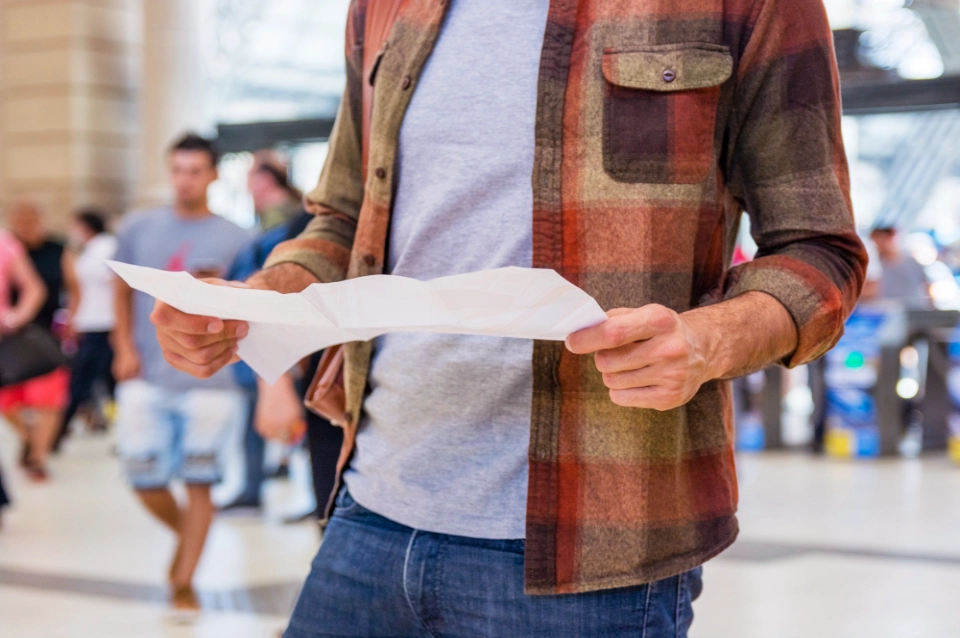
Getting to Ifrane
Most visitors reach Ifrane by road from Fez or Meknes. From Fez, the journey takes approximately one hour via well-maintained highway. Grand taxis (shared taxis) run regularly between Fez and Ifrane, offering affordable transport though departures wait until vehicles fill. Private taxis cost more but provide direct service on your schedule.
Rental cars offer flexibility for exploring Ifrane and the surrounding region. Major agencies operate in Fez and at Fez-Saïss Airport. The drive from Fez to Ifrane is straightforward on good roads, though winter can bring snow requiring careful driving or tire chains.
Some tour operators include Ifrane in Middle Atlas itineraries, combining visits with Azrou, cedar forests, and imperial cities. These tours handle transport and often include guides providing context and access to sites.
Getting Around Ifrane
Ifrane’s compact size makes walking feasible for most in-town destinations. The town’s flat center and pedestrian-friendly streets encourage strolling. Most hotels, restaurants, and attractions lie within comfortable walking distance of each other.
For visiting outlying attractions like Dayet Aoua Lake, cedar forests, or Michlifen ski resort, transport is necessary. Taxis can be hired for specific trips or half-day excursions. Negotiate prices in advance. Car rental allows maximum flexibility for exploring the region independently.
Bicycles suit Ifrane’s terrain and scale during mild weather. Some hotels provide bikes for guests, or rental shops offer hourly or daily rates.
Best Time to Visit
Ifrane welcomes visitors year-round, with optimal timing depending on interests:
For snow and skiing: December through February offers best snow conditions, with January typically seeing heaviest snowfall.
For hiking and nature: Late spring (April-May) and autumn (September-October) provide ideal temperatures and conditions. Spring brings flowers and active wildlife, while autumn offers fall colors.
To escape heat: Summer (June-August) attracts heat-weary visitors from lowland cities. Temperatures remain comfortable though crowds increase.
For photography: Winter for snow scenes, autumn for forest colors, spring for wildflowers and green landscapes.
What to Pack
Packing for Ifrane requires consideration of elevation and season:
Year-round essentials:
- Layers including light jacket or fleece (evenings cool even in summer)
- Comfortable walking shoes with good traction
- Sun protection (sunglasses, hat, sunscreen—mountain sun is strong)
- Camera for capturing unique landscapes and architecture
Summer additions:
- Light clothing for warm days
- Warmer layer for cool evenings and early mornings
- Rain jacket (occasional afternoon thunderstorms)
Winter additions:
- Warm coat, hat, gloves, scarf
- Insulated waterproof boots for snow
- Thermal layers for outdoor activities
- Lip balm and moisturizer (air is very dry)
For skiing:
- Ski clothing if you have it, though rental equipment includes basic gear
- Warm base layers
- Waterproof gloves
- Goggles or sunglasses for snow brightness
Money and Costs
Ifrane is more expensive than many Moroccan destinations due to its resort character and affluent visitor base. However, costs remain reasonable by European or North American standards.
Budget travelers can manage on $40-50 per day including basic accommodation, simple meals, and local transport. Mid-range travelers should budget $70-100 daily for comfortable hotels, restaurant meals, and activities. Luxury stays with fine dining and premium activities exceed $150 daily.
ATMs are available in the town center, accepting international cards. Credit cards work at hotels and larger restaurants, though cash remains essential for taxis, markets, and smaller establishments. Morocco’s currency is the Dirham (MAD).
Safety
Ifrane is exceptionally safe with very low crime rates. The town’s affluence, small size, and strong community bonds create secure environments. Standard precautions apply—watch belongings, avoid displaying expensive items unnecessarily—but serious crime against tourists is rare.
Winter brings weather-related considerations. Driving requires caution during snow or ice. Stay informed about conditions before mountain hikes, as weather can change quickly at elevation. Frostbite and hypothermia risks exist during extreme cold.
Language
Arabic is official, with Berber widely spoken locally. French is broadly understood and used in tourism contexts. English is more common than in many Moroccan cities due to Al Akhawayn University’s presence. However, English proficiency varies. Basic French or Arabic phrases prove helpful.
Health Considerations
Ifrane’s elevation may cause mild altitude effects in sensitive individuals—headaches, slight breathlessness, fatigue. These typically resolve as you acclimatize. Stay hydrated and avoid overexertion initially.
The dry air, especially in winter, can cause dehydration and dry skin. Drink plenty of water and use moisturizers and lip balm.
Medical facilities exist in Ifrane for minor issues, with comprehensive hospitals in Fez for serious problems. Travel insurance with medical coverage is advisable.
Internet and Communication
WiFi is widely available at hotels, restaurants, and cafés. Mobile coverage is good throughout Ifrane and surprisingly extensive in surrounding mountains. Moroccan SIM cards offer inexpensive data packages from providers including Maroc Telecom, Orange, and Inwi.
Sustainable Tourism in Ifrane
Ifrane’s reputation as Africa’s cleanest city reflects strong environmental consciousness worth supporting:
- Waste Management: Use bins provided throughout town. Ifrane’s cleanliness depends on everyone’s cooperation. If no bin is available, carry trash until you find proper disposal.
- Nature Conservation: Stay on marked trails in forests and parks. Don’t disturb wildlife—observe Barbary macaques from respectful distances and never feed them. Feeding alters natural behaviors and makes animals dependent on humans.
- Water Conservation: Morocco faces water scarcity. Use water responsibly, take shorter showers, and reuse towels.
- Support Local Economy: Buy crafts directly from artisans in markets, eat at locally-owned restaurants, and hire local guides. Tourism revenue supporting communities encourages conservation.
- Cultural Respect: Ifrane is relaxed but remains culturally Moroccan. Dress modestly, especially outside tourist areas. Ask permission before photographing people.
- Energy Conservation: Ifrane’s cold climate requires heating. Use energy responsibly by not overheating rooms and turning off lights and heating when leaving.
Shopping for Souvenirs
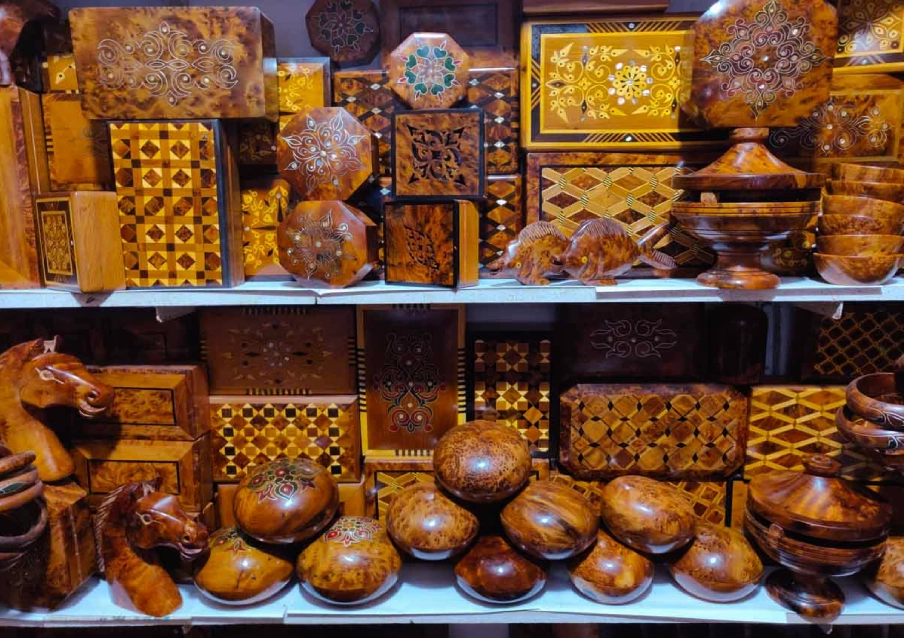
Ifrane itself offers limited shopping, focusing more on practical goods than tourist souvenirs. However, several items worth seeking include:
Cedar woodwork: Local artisans carve decorative items from cedar—boxes, trays, sculptures. Quality varies, so examine craftsmanship before purchasing. The aromatic cedar makes these items special reminders of the Atlas Mountains.
Berber carpets and textiles: The Azrou market offers excellent selection of handwoven carpets, rugs, and blankets. Traditional Berber designs feature geometric patterns and natural dye colors. These represent significant purchases—bargain patiently and ensure quality matches price.
Local honey: Mountain wildflower honey from the region is delicious and distinctive. Purchase from reputable vendors to ensure authenticity.
Photographs and art: Local photographers and artists capture Ifrane’s beauty. Galleries occasionally sell prints and original works.
For more extensive souvenir shopping, day trips to Fez provide access to that city’s famous medina crafts—leather goods, metalwork, ceramics, and textiles.
Wildlife Watching Tips

The Middle Atlas forests around Ifrane offer excellent wildlife observation opportunities:
Best times: Early morning and late afternoon see highest animal activity. Midday heat (even in mountains) drives many species to shelter.
Barbary macaques: Visit cedar forests near Azrou where troops are habituated to observers. Maintain 5-10 meter distance minimum. Never feed or touch them—they’re wild animals with unpredictable behavior and can bite. Observe quietly without sudden movements.
Birds: Bring binoculars for best views. Spring and autumn migrations increase species diversity. Patient observation near water sources often rewards with good sightings.
General wildlife etiquette: Move quietly, wear muted colors, avoid perfumes or scented products, stay on trails to minimize habitat disruption, never chase or corner animals, respect closed areas designed for wildlife protection.
Hire guides: Local naturalist guides enhance wildlife watching by knowing where animals are likely to be found, identifying species, explaining behaviors, and ensuring ethical observation practices.
Photography in Ifrane
Ifrane offers distinctive photography opportunities:
Architecture: The Alpine-style buildings provide unique subjects. Early morning or late afternoon light enhances architectural details. The stone lion statue is iconic but challenging due to crowds—visit early morning for cleaner shots.
Seasons: Each season offers different palettes—winter’s white snow contrasts with dark evergreens, spring brings wildflower colors, summer provides lush green landscapes, autumn delivers golden forest tones.
Nature: Cedar forests create atmospheric images with dappled light filtering through branches. Barbary macaques provide wildlife subjects. Lakes and streams offer reflection opportunities.
Respectful practices: Always ask permission before photographing people, especially in Berber villages. Some people prefer not being photographed, and respecting this maintains good relations between tourists and locals.
Final Thoughts
Ifrane defies Morocco stereotypes while remaining authentically Moroccan. This mountain town offers refreshing contrasts—Alpine architecture in Africa, snow in the Sahara’s country, French influence blending with Berber traditions. Whether you seek winter skiing, summer coolness, nature immersion, or simply a unique destination unlike typical tourist circuits, Ifrane delivers.
The town serves multiple purposes for different travelers. Families appreciate safety, cleanliness, and accessible nature. Nature enthusiasts explore forests and wildlife. Culture seekers use Ifrane as a tranquil base for visiting nearby imperial cities. Weekend visitors from coastal cities escape to mountain air and scenery.
As Morocco diversifies its tourism offerings beyond beaches and deserts, Ifrane stands out as a developed mountain destination with solid infrastructure, natural assets, and distinctive character. The town’s commitment to cleanliness and environmental quality sets standards for sustainable tourism development.
Visit Ifrane to experience Morocco’s mountains, breathe fresh cedar-scented air, walk among ancient forests, and discover that this North African country contains far more diversity than one journey can encompass. In Ifrane, Morocco reveals yet another facet of its remarkable complexity.
FAQs
Q: Why is Ifrane called “Little Switzerland” and does it really look like Europe?
A: Ifrane earned the nickname “Little Switzerland” due to its striking Alpine-style architecture featuring steep-roofed chalets, its cool mountain climate, pristine cleanliness, and surrounding pine and cedar forests. The town was designed by French architects during the colonial period specifically to resemble European Alpine resorts. While it genuinely feels European with its orderly streets, manicured gardens, and architectural style, Ifrane remains distinctly Moroccan in culture, cuisine, and daily life. The European appearance surprises first-time visitors expecting typical Moroccan architecture, making it one of Morocco’s most unique destinations.
Q: Can you really ski in Morocco, and is Ifrane suitable for winter sports?
A: Yes, Morocco offers skiing at Michlifen resort near Ifrane and Oukaïmeden near Marrakech. Michlifen operates from January through March depending on snowfall, offering several runs suitable for beginners and intermediate skiers. While modest compared to major European or North American resorts, it provides unique experiences—skiing in Africa with African mountain views. The resort has equipment rental, ski instruction, and basic facilities. Ifrane itself receives significant snow in winter, creating opportunities for snow play, snowshoeing, and winter hiking even if you don’t ski. For serious skiers, Michlifen offers a fun novelty rather than a destination resort, but for families or beginners, it provides genuine winter sports experiences in unexpected locations.
Q: What is the best time to visit Ifrane for different activities?
A: The optimal time depends on your interests. For skiing and winter experiences, visit December through February when snow is most reliable and Michlifen resort operates. For hiking and nature exploration, late spring (April-May) and autumn (September-October) offer ideal conditions with comfortable temperatures, accessible trails, and spectacular scenery—spring brings wildflowers while autumn delivers fall foliage. Summer (June-August) attracts Moroccan tourists escaping lowland heat, offering pleasant 20-25°C temperatures perfect for outdoor activities, though crowds increase. Each season has distinct character, so consider whether you want snow sports, comfortable hiking weather, or escape from heat when planning your visit.
Q: Is Ifrane suitable for families with children?
A: Absolutely. Ifrane is exceptionally family-friendly and safer than most Moroccan cities. The town’s cleanliness, pedestrian-friendly layout, parks and gardens, and car-free zones create ideal environments for children. Activities suit various ages—young children enjoy playing in parks, feeding ducks at lakes, and experiencing snow in winter; older children appreciate hiking in forests, observing Barbary macaques, and skiing at Michlifen. The cool climate provides comfortable conditions for outdoor activities without excessive heat. Many hotels offer family rooms or apartments, and restaurants accommodate children with familiar foods. The town’s compact size allows easy navigation, and the safe environment lets families relax more than in busy cities.
Q: How different is Ifrane from other Moroccan cities, and is it worth visiting if I’m already seeing Fez or Marrakech?
A: Ifrane differs dramatically from Morocco’s imperial cities and represents a completely different experience. While Fez and Marrakech showcase Islamic architecture, ancient medinas, bustling souks, and desert-influenced culture, Ifrane offers mountain tranquility, European aesthetics, pristine nature, and cool climate. The contrast itself makes Ifrane worthwhile—experiencing Morocco’s diversity beyond stereotypical images. Many travelers appreciate Ifrane as a peaceful retreat after intense cultural immersion in busy cities. The surrounding natural attractions—cedar forests, Barbary macaques, mountain landscapes—provide experiences unavailable in urban centers. If your Morocco itinerary focuses only on imperial cities and deserts, adding Ifrane reveals the country’s remarkable geographical and cultural diversity. It’s particularly worthwhile during summer when cities are hot, or winter for unique skiing experiences.
